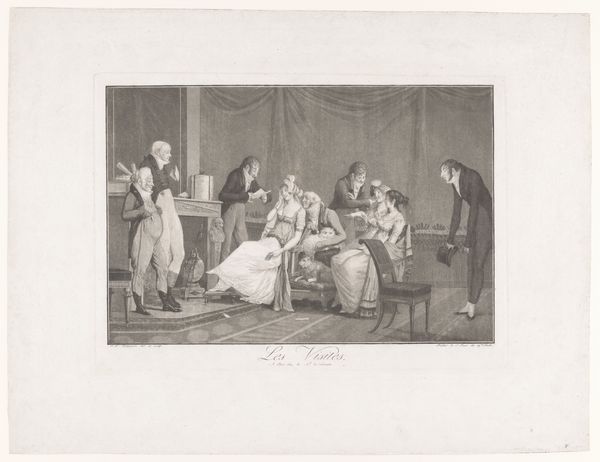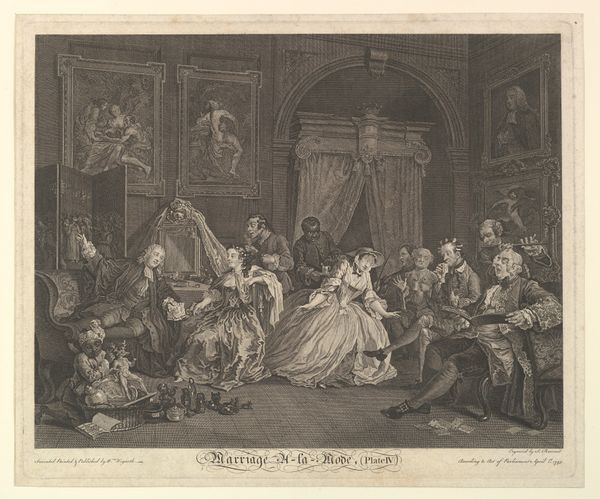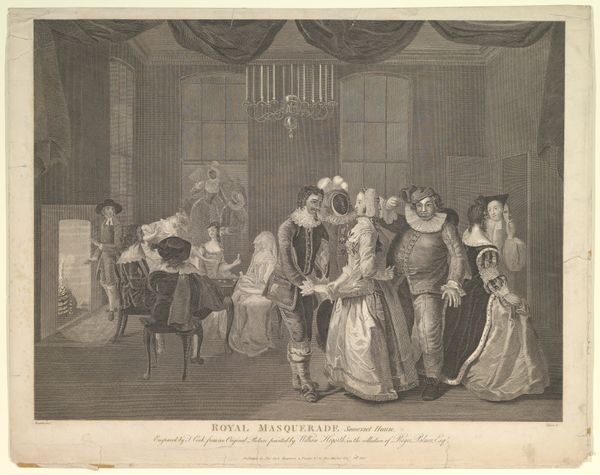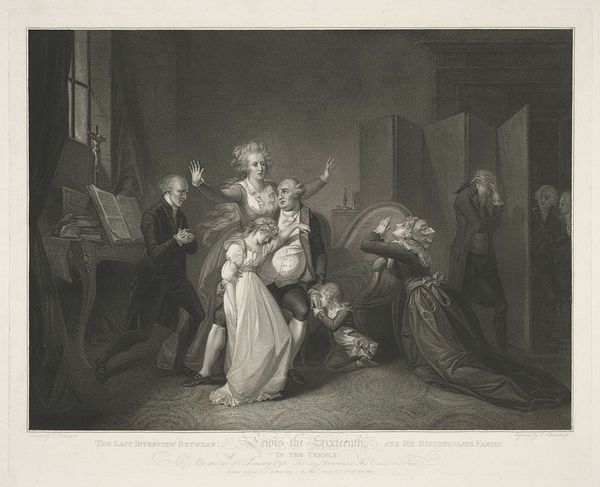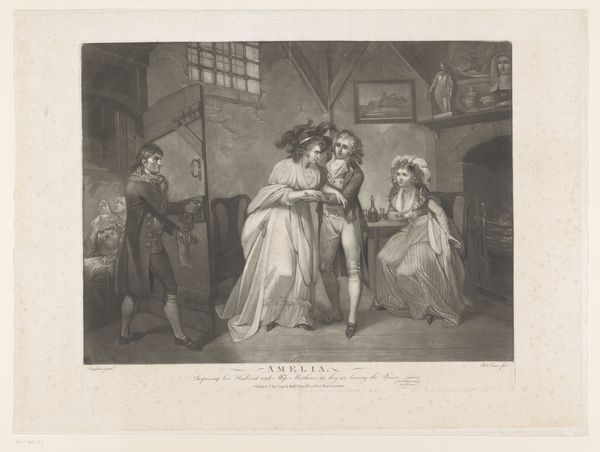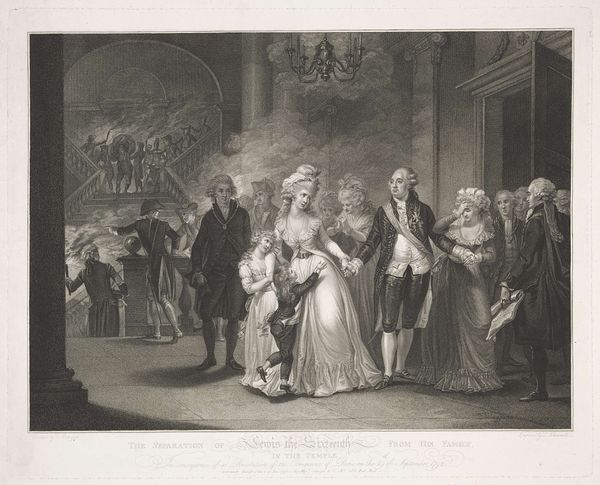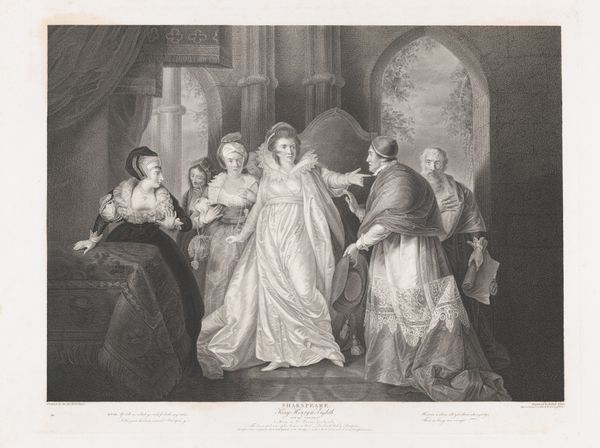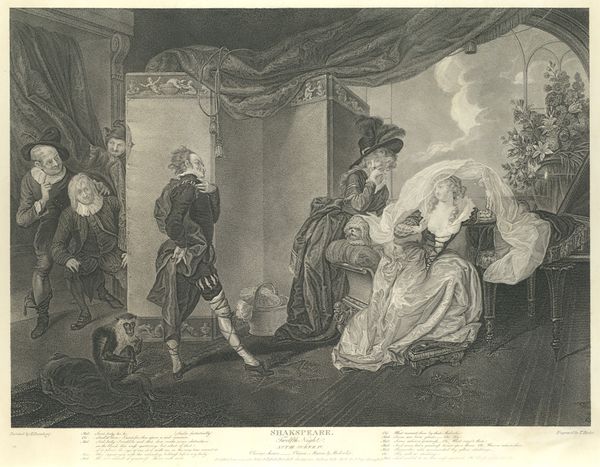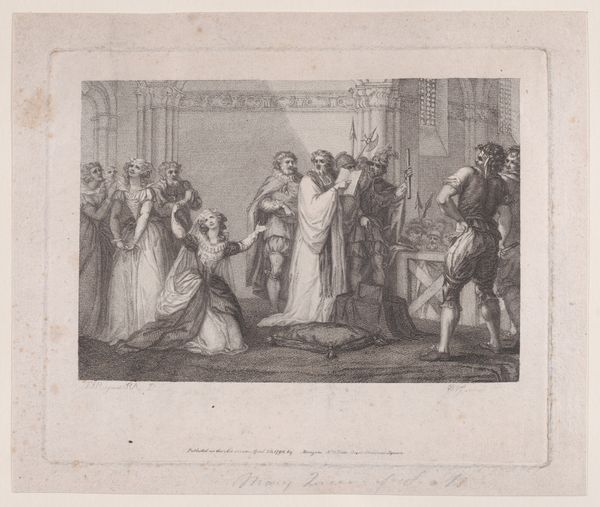
engraving
#
portrait
#
neoclacissism
#
history-painting
#
engraving
Dimensions: height 581 mm, width 657 mm
Copyright: Rijks Museum: Open Domain
Curator: My eye is immediately drawn to the postures in this monochromatic engraving, especially the stark contrast between the seated King and the standing Queen. What's your take? Editor: "Catharina van Aragon pleitend voor Hendrik VIII, koning van Engeland" translates to Catherine of Aragon pleading before Henry VIII, King of England, and in terms of power dynamics, it’s telling, isn't it? The whole scene feels fraught with anxiety, underscored by this cool, neo-classical style—William Ward captured it in 1794. It really captures the personal and political turmoil inherent in gender and monarchal power during this period. Curator: Yes, I see how Ward employs Neoclassical lines to bring gravitas to this pivotal moment in Tudor history. Think of how body language as visual shorthand for inner turmoil becomes particularly loaded in the face of divorce! Catherine's raised hand, index finger extended, isn't just beseeching. It symbolizes truth. The cross pendant hanging prominently might evoke self-sacrifice as a path toward something larger. The way Ward’s style emphasizes line and clear structure feels very considered. Editor: That truth is loaded, though. I agree the details of dress and adornment signal intention, even conviction, but doesn’t her performance mask structural inequalities, deeply gendered legal apparatuses? Even visually, Catherine is given the stage, sure, but Henry literally looks down on her—a potent message about privilege. The work gestures towards individual tragedy, while potentially re-inscribing power. And you know, Henry looking so pensive can signal all sorts of problems for our Queen. Curator: You make such insightful points regarding the gendered hierarchies at play. What strikes me are the mirroring gestures - Catherine extending her hand toward Henry, who, in turn, rests a hand to his face; these symbolic echoes point towards relational entanglement, a dynamic between these people despite what divides them. The faces peering from the background become an uneasy collective consciousness. The overall composition offers more than what historical records themselves reflect! Editor: Exactly. Ward forces us to contend with historical images not as simple representations of the past, but as constructions that inevitably reflect biases and inequalities of their own time, or in the time periods depicted, and these renderings must be questioned in terms of the message they were set to convey. Curator: This really makes me wonder about the cultural memory embedded into artworks like this, and how the way they look shapes future visual cultures as well! Editor: Well said, the social weight of artistic output! So, looking at "Catharina van Aragon pleitend voor Hendrik VIII", through both an emotional, art historical lens, is a critical starting point for broader inquiry.
Comments
No comments
Be the first to comment and join the conversation on the ultimate creative platform.
